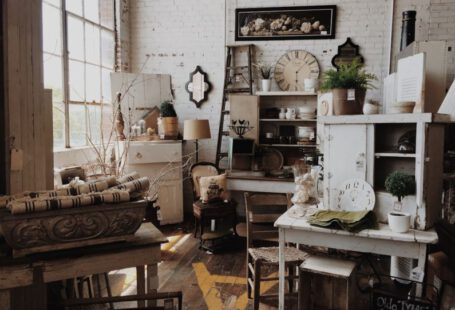Farmhouse style homes have soared in popularity in recent years, capturing the hearts of many homeowners with their charming, cozy, and inviting aesthetic. Reflecting simplicity, warmth, and a touch of nostalgia, farmhouse style homes blend traditional elements with modern comforts to create a unique and timeless appeal. If you are looking to infuse your home with the quintessential farmhouse charm, understanding the key elements of this design style is essential. From rustic materials to architectural details, here are the elements that define a farmhouse style home.
Rustic Materials and Textures
At the core of farmhouse style is the use of natural, rustic materials that evoke a sense of simplicity and authenticity. Wood, particularly reclaimed or distressed wood, plays a pivotal role in creating the farmhouse look. Exposed beams, hardwood floors, and shiplap walls are common features that add character and warmth to the interior spaces. Additionally, incorporating other textures such as stone, metal, and natural fibers like jute and linen further enhances the rustic appeal of a farmhouse style home.
Neutral Color Palette
A neutral color palette forms the foundation of farmhouse style decor, setting the tone for a serene and soothing ambiance. Whites, creams, beiges, and soft grays dominate the color scheme, creating a backdrop that allows the natural materials and textures to shine. While neutrals are the primary colors used in farmhouse interiors, subtle pops of color in muted tones like sage green, soft blue, or pale yellow can be introduced through accessories and decor items to add interest and depth to the space.
Vintage and Antique Furnishings
Incorporating vintage and antique furnishings is a hallmark of farmhouse style, infusing the home with a sense of history and nostalgia. Weathered, worn-in pieces with patina and imperfections contribute to the lived-in and comfortable feel of a farmhouse interior. Mixing old with new, such as pairing a reclaimed farmhouse table with modern chairs or blending vintage textiles with contemporary upholstery, creates a curated look that is both stylish and inviting.
Cozy Textiles and Layered Fabrics
To enhance the cozy and inviting atmosphere of a farmhouse style home, the use of soft textiles and layered fabrics is key. Think plush throw blankets, linen drapes, cotton slipcovers, and wool rugs that add warmth and texture to the space. Mixing different fabrics in varying weights and textures creates depth and visual interest while fostering a sense of comfort and relaxation.
Architectural Details
Architectural details play a crucial role in defining the farmhouse style aesthetic. Elements such as board and batten siding, gable roofs, dormer windows, and wrap-around porches are characteristic of farmhouse architecture and contribute to its charming appeal. Exposed brick walls, barn doors, and industrial-style lighting fixtures are additional details that can be incorporated to enhance the farmhouse look and feel.
Functional and Unfussy Design
Farmhouse style embraces a functional and unfussy approach to design, prioritizing comfort and practicality above all else. Furniture is often sturdy and well-worn, with a focus on pieces that serve a purpose and stand the test of time. Open shelving, farmhouse sinks, and butcher block countertops are common features in farmhouse kitchens, emphasizing utility and simplicity in design.
Embracing the Wabi-Sabi Aesthetic
Wabi-sabi, the Japanese philosophy of finding beauty in imperfection and impermanence, aligns seamlessly with the farmhouse style ethos. Embracing the wabi-sabi aesthetic in a farmhouse interior involves celebrating the beauty of aged materials, embracing the patina of time, and cherishing the imperfect and handmade elements that give a space its unique character. This appreciation for the imperfect and the authentic is what gives farmhouse style homes their soulful and inviting allure.
Incorporating these key elements into your home will help you create a farmhouse style interior that exudes warmth, charm, and character. By combining rustic materials, neutral colors, vintage furnishings, cozy textiles, architectural details, and a wabi-sabi sensibility, you can transform your living space into a cozy retreat that feels both timeless and modern. Whether you live in a rural farmhouse or a city apartment, infusing your home with farmhouse style elements can bring a sense of comfort and tranquility to your everyday life.





